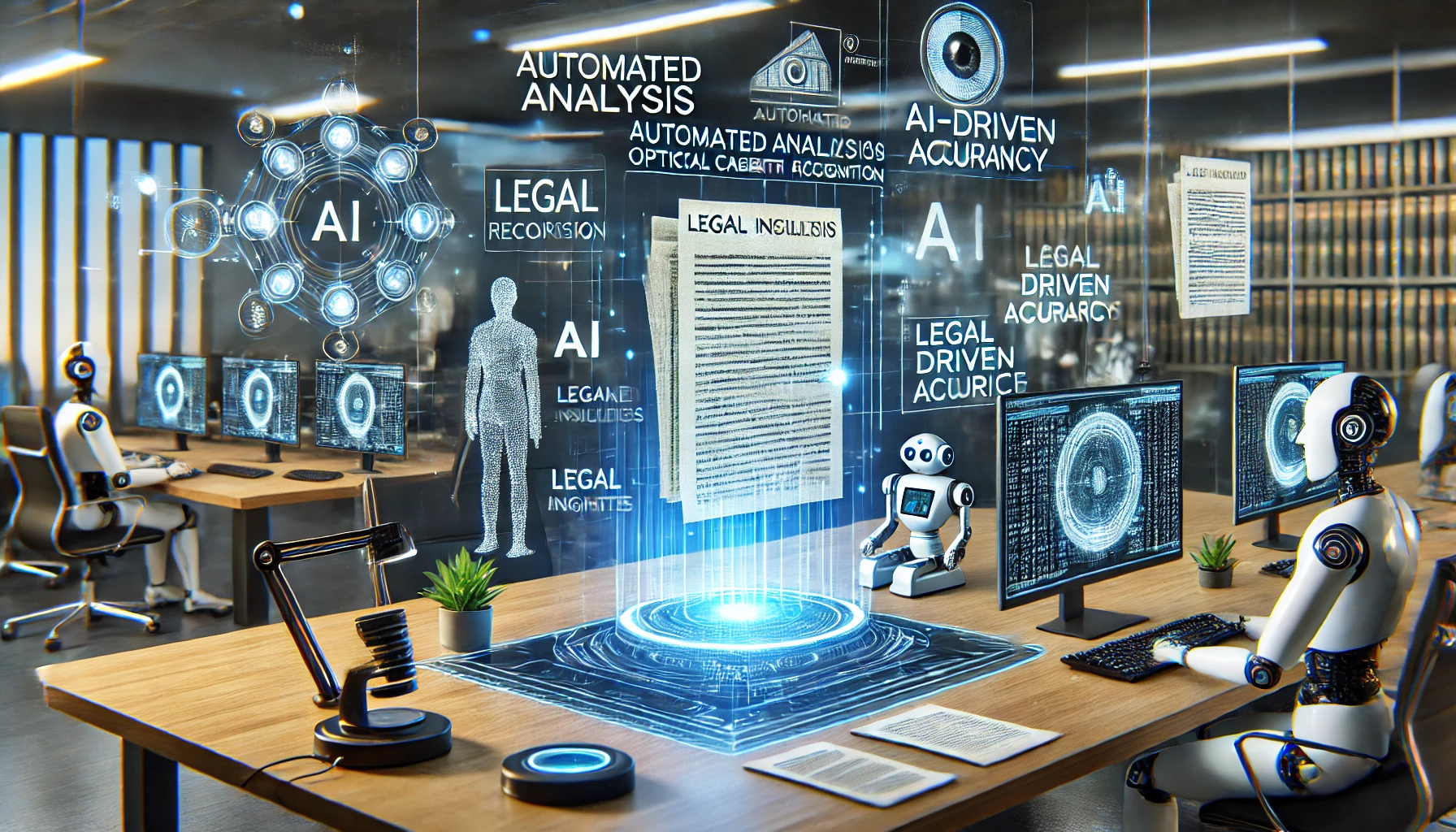Introduction
In the fast-paced legal world, professionals juggle mountains of documents—contracts, case files, compliance records. Traditional Optical Character Recognition (OCR) has long aided digitization, but its limitations in accuracy and context awareness hinder efficiency. Enter AI-powered OCR, a game-changer poised to revolutionize legal document analysis through smarter, faster, and more intuitive processing.
Advancements in AI-Driven OCR Technology
- Enhanced Accuracy with Machine Learning
Modern OCR leverages deep learning to decipher messy handwriting, low-quality scans, and complex layouts. Unlike rule-based predecessors, AI models continuously improve, reducing errors and adapting to diverse document types. - Contextual Understanding
AI doesn’t just read text—it understands context. By recognizing legal jargon, clauses, and document structures, it can differentiate between a liability clause and a definitions section, streamlining review processes. - Integration with Natural Language Processing (NLP)
NLP enables systems to extract meaning, identify parties in contracts, flag anomalies, and summarize content. This transforms raw text into actionable insights, crucial for due diligence or compliance checks. - Workflow Automation
AI OCR automates categorization, routing, and prioritization of documents. Imagine a system that instantly files incoming contracts, highlights critical deadlines, and alerts teams to potential risks—all without human intervention.
Applications in Legal and Business Sectors
- Legal Use Cases
- Contract Review: AI OCR slashes review time from hours to minutes, pinpointing clauses like termination terms or NDAs.
- Due Diligence: Rapidly analyzes thousands of documents during mergers, identifying liabilities or intellectual property issues.
- Compliance Monitoring: Tracks regulatory changes and ensures documents adhere to latest standards, reducing legal exposure.
- Business Applications
- Invoice Processing: Automates data extraction from invoices, integrating with accounting systems for seamless payments.
- Customer Service: Parses IDs or forms in real-time, accelerating onboarding or claims processing.
- Data Governance: Organizes archival documents into searchable databases, enhancing accessibility and audit readiness.
Benefits Across the Board
- Time and Cost Savings: Reduces manual labor, allowing teams to focus on high-value tasks.
- Error Reduction: Minimizes human mistakes in data entry or oversight.
- Scalability: Handles volume spikes effortlessly, ideal for growing firms or large-scale litigation.
The Road Ahead: Future Trends
- Predictive Analytics: AI could forecast legal outcomes by analyzing historical case documents or judge rulings.
- Blockchain Integration: Secure, immutable document tracking enhances trust in sensitive agreements.
- Ethical AI: Addressing biases in training data and ensuring privacy compliance will be critical as adoption grows.
Challenges and Considerations
While promising, AI OCR isn’t without hurdles. Over-reliance risks missing nuanced interpretations, necessitating human oversight. Data privacy concerns, especially with cloud-based solutions, require robust encryption and compliance frameworks like GDPR.
Conclusion
AI-powered OCR is not just a tool but a transformative force in legal and business landscapes. By marrying precision with intelligence, it empowers professionals to navigate document-heavy tasks with unprecedented efficiency. As technology evolves, embracing these innovations—while minding ethical and practical considerations—will be key to staying competitive.
Call to Action
Ready to revolutionize your document workflows? Explore AI OCR solutions today and unlock the potential of smarter, faster legal analysis.
Keywords: AI-powered OCR, legal document analysis, OCR technology, legal tech, NLP in OCR, document automation, contract review, due diligence.
This blog post balances technical insights with practical examples, guiding readers through the evolution and impact of AI OCR while highlighting its transformative role in legal and business ecosystems.
